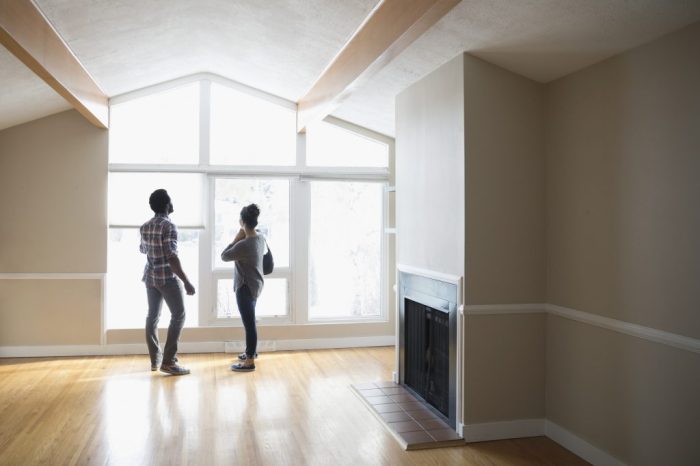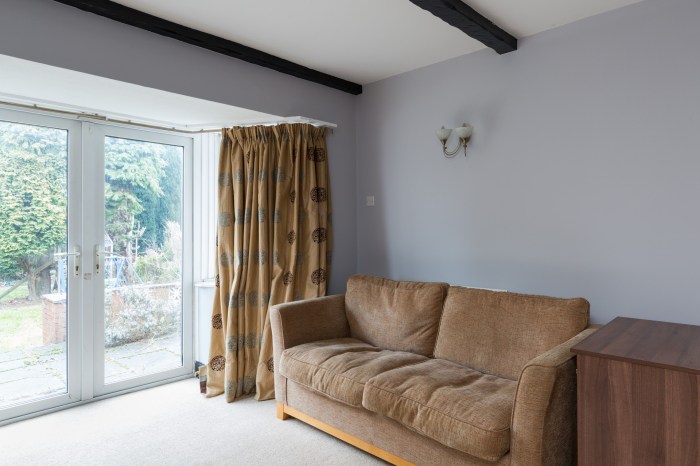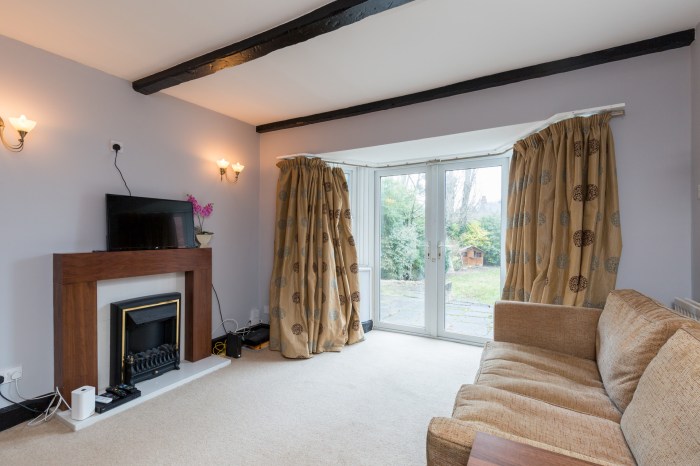Renting a Room in a House A Comprehensive Guide
Finding Suitable Rooms
Renting a room in a house – Finding the perfect room to rent can feel overwhelming, but with a strategic approach and the right resources, the process can be significantly streamlined. This section Artikels effective strategies for locating a room that meets your specific needs and preferences, covering online platforms, search techniques, and even crafting a compelling advertisement if you’re looking to rent out a room yourself.
Popular Room Rental Platforms
Several websites and apps facilitate the search for rental rooms. Each platform offers unique advantages and disadvantages.
- SpareRoom: A popular UK-based platform, known for its detailed room listings and community features. Advantages: Large selection, detailed profiles, community forum. Disadvantages: Primarily UK-focused, some listings may be outdated.
- Facebook Marketplace: A widely used platform offering local listings, often with direct communication with landlords. Advantages: Direct contact, potentially lower fees. Disadvantages: Less formal verification, higher risk of scams.
- Roomlala: A global platform connecting renters with landlords worldwide. Advantages: International reach, diverse options. Disadvantages: Language barriers may arise, verification processes may vary.
Effective Search Strategies
Refining your search parameters significantly improves your chances of finding a suitable room. Consider these strategies:
- Define your budget: Set a realistic rental budget, including utilities and potential deposits.
- Specify location preferences: Consider proximity to work, school, or public transportation.
- List desired amenities: Identify essential features, such as furnished rooms, private bathrooms, or parking.
- Use searches: Utilize relevant s to narrow down your search results (e.g., “furnished room near university,” “single room ensuite”).
Sample Room Rental Advertisement
A well-written advertisement attracts suitable housemates. Here’s an example:
Cozy Furnished Room in Vibrant Neighborhood
Spacious, furnished room available in a friendly, shared house. Close to public transport and local amenities. £[Rental Price] per month, including bills. Private bathroom. Contact [Your Name] at [Your Contact Information].
Legal and Financial Aspects: Renting A Room In A House
Understanding the legal and financial aspects of renting a room is crucial to protect your interests and avoid potential disputes. This section covers rental agreements, essential clauses, and necessary documentation.
Rental Agreement Process
The rental agreement process typically involves finding a suitable room, negotiating terms with the landlord, and signing a legally binding contract. This contract Artikels the responsibilities of both the landlord and the tenant.
Importance of Lease Terms
Carefully review the lease agreement before signing. Understanding the terms and conditions protects you from unexpected costs or responsibilities. Pay close attention to clauses related to rent payments, lease duration, and termination clauses.
Common Clauses in Rental Agreements
Common clauses include rent amount and payment schedule, lease duration, security deposit terms, maintenance responsibilities, and termination conditions. A clear understanding of these clauses is essential.
Essential Documents Checklist
Before signing a lease, gather these essential documents:
- Valid identification (passport, driver’s license)
- Proof of income (pay slips, bank statements)
- References (previous landlords or employers)
- Completed rental application form
Living with Housemates
Sharing a house with housemates can be a rewarding experience, but effective communication and clear expectations are key to a harmonious living environment. This section provides strategies for fostering positive relationships and resolving conflicts.
Communication and Conflict Resolution
Open and honest communication is crucial. Address issues promptly and respectfully, focusing on finding solutions rather than assigning blame. Consider using a house meeting to discuss shared concerns.
Maintaining a Clean and Organized Space
Establish clear cleaning schedules and responsibilities. Communicate expectations regarding cleanliness and shared spaces to avoid misunderstandings.
Potential Challenges and Solutions
Potential challenges include differing lifestyles, noise levels, and shared resources. Addressing these proactively through open communication and pre-agreed rules minimizes conflict.
Sample Housemate Agreement
A written agreement clarifies responsibilities and expectations. This table provides a sample structure:
| Responsibility | Person Responsible | Frequency | Consequences of Non-Compliance |
|---|---|---|---|
| Cleaning Kitchen | Rotating Weekly | Weekly | Verbal warning, then potential fines |
| Taking out Trash | Rotating Weekly | Daily/as needed | Verbal warning, then potential fines |
| Maintaining Common Areas | All Housemates | Ongoing | House meeting to discuss and create a solution |
| Paying Bills | Designated Person | Monthly | Late fees, potential eviction |
Room Amenities and Utilities
The type of room and included utilities significantly impact the overall rental cost and living experience. This section details different room types, utility inclusions, and reporting maintenance issues.
Types of Rooms

Source: zillowstatic.com
Rooms vary in features, including furnished vs. unfurnished, private bathroom vs. shared bathroom, and size. Consider your preferences and budget when choosing.
Utilities Included/Excluded
Rent may include some utilities (water, internet) while others (electricity, gas) are paid separately. Clarify utility inclusions before signing a lease.
Reporting Maintenance Issues
Report maintenance issues promptly to the landlord or property manager using agreed-upon communication channels (email, phone). Document all communication.
Room Inspection Checklist
Before signing a lease, thoroughly inspect the room, noting the condition of appliances, fixtures, and any existing damage. Document your findings with photos.
- Check plumbing and electrical systems.
- Inspect windows and doors for proper function.
- Assess the condition of appliances (refrigerator, oven).
- Note any existing damage and document it with photos.
Safety and Security
Prioritizing safety and security is crucial when renting a room. This section provides strategies for creating a safe and secure living environment.
Personal Safety Strategies, Renting a room in a house
Be aware of your surroundings, especially at night. Trust your instincts and avoid risky situations. Share your location with trusted friends or family.
Potential Security Risks and Prevention
Potential risks include theft, vandalism, and unauthorized access. Install strong locks, use security lighting, and consider a personal alarm.
Importance of Emergency Contacts
Have a reliable emergency contact readily available, including local emergency services numbers and the landlord’s contact information.
Creating a Safe Living Environment
Ensure adequate lighting, functioning locks, and smoke detectors. Discuss security measures with housemates and establish clear communication protocols.
Neighbourhood Considerations

Source: cloudfront.net
Choosing the right neighborhood significantly impacts your overall living experience. This section guides you through researching and comparing neighborhoods.
Comparing Neighborhoods
Consider factors like commute times, safety, amenities (shops, parks), and the overall atmosphere when choosing a neighborhood.
Neighborhood Research Process
Research crime rates, local amenities, and transportation options using online resources and local community forums.
Resources for Neighborhood Information
Utilize online resources like crime statistics websites, community forums, and local government websites to gather information.
Neighborhood Comparison Table
This table provides a sample structure for comparing neighborhoods:
| Neighborhood | Pros | Cons | Commute Time |
|---|---|---|---|
| Neighborhood A | Close to public transport, many shops | Can be noisy at night, higher crime rate | 15 minutes |
| Neighborhood B | Quiet, family-friendly, good schools | Further from city center, limited amenities | 30 minutes |
Moving In and Moving Out
The moving process involves a series of steps, from conducting a thorough inventory to returning the security deposit. This section provides a detailed guide.
Moving In Guide
A step-by-step guide includes: signing the lease, paying the security deposit, arranging utilities, and moving your belongings.
Room Inventory

Source: cloudfront.net
Before moving in, conduct a thorough inventory of the room’s contents, noting the condition of furniture and fixtures. Document this with photos or a written record.
Moving Out Procedures
Give sufficient notice to the landlord, clean the room thoroughly, return keys, and request the return of your security deposit.
Communication with Landlord
Maintain open and respectful communication with the landlord throughout the moving process. Address any issues promptly and professionally.
User Queries
What is a security deposit, and how does it work?
A security deposit is a sum of money paid upfront by the renter to protect the landlord against damages to the property. It’s typically returned at the end of the tenancy, less any deductions for damages beyond normal wear and tear. The exact terms should be clearly Artikeld in the rental agreement.
How do I find out about the neighborhood’s safety?
Research the neighborhood’s crime statistics using online resources provided by local law enforcement agencies or community watch groups. You can also ask current residents or neighbors about their experiences and perceptions of safety in the area.
What if I have a dispute with my housemate?
Attempt to resolve the dispute through open and respectful communication. If this fails, consider mediation or seeking advice from your landlord or a tenant’s rights organization.
Can I sublet my room?
Subletting is generally governed by your rental agreement. Check the terms carefully; many agreements prohibit subletting without the landlord’s written consent.




















